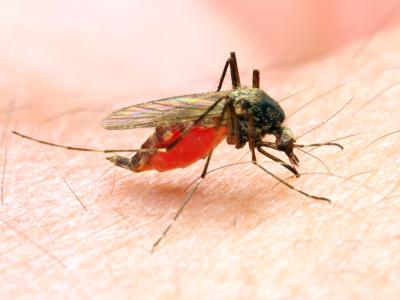Study: 1 in 5 physicians highly distressed during first COVID-19 triages
A survey of 164 New York physicians found that one in five were severely distressed during their first COVID-19 triage decisions and last-minute training did not appear to alleviate stress, according to a study yesterday in Disaster Medicine and Public Health Preparedness.
The researchers sent out the online survey Apr 29 to May 1, 2020; on Mar 23, 2020, Gov. Andrew Cuomo had ordered hospitals to increase capacity by 50% because of the expected patient surge. All respondents were involved in the treatment of at least one COVID patient, and most were also men (59.9%) or working in their usual clinical setting/activity (82.2%).
Half had received just-in-time training (JiTT), and about 70% (115) received clinical guidelines.
On a 10-point scale of distress, the average score overall was 6.1, and 20.7% experienced severe distress—a value of 8 or higher. No significant correlation was seen with JiTT or clinical guidelines, with the average scores for both being 6.0 for those who received such guidance versus 6.2 for those who didn't.
While some significant factors of distress were female gender and fewer years of post-residency practice, the researchers say the strongest predictor of distress was whether physicians believed the triage decision went against their core values (adjusted odds ratio [aOR], 6.33; 95% confidence interval [CI], 2.03 to 19.76) or if they had insufficient skills or expertise (aOR, 2.00; 95% CI, 0.91 to 9.87).
"Our study indicates that COVID-19-related JiTT and clinical guidelines do not seem to help alleviate distress experienced by physicians during their first COVID-19 triage decision," the researchers write, although they note that the survey did not capture whether these occurred before or after the first triage patients.
Jun 7 Disaster Med Public Health Prep study
Single dose of Pfizer COVID vaccine 51% protective, real-world data show
A single, 30-microgram dose of the Pfizer/BioNTech COVID-19 vaccine was 51% effective for any SARS-CoV-2 infection and 54% for symptomatic infections, according to a study yesterday in JAMA Network Open.
The research cohort consisted of 503,875 Israelis 16 years and older who received a single dose from Dec 19, 2020, to Jan 15, 2021. A little more than half (52.4%) were women, the mean age was 59.7 years, and 69.8% had follow-up data for days 13 to 24 post-vaccination in addition to days 1 to 12.
The cumulative incidence of SARS-CoV-2 infection was 0.57% (2,484 cases) for days 1 through 12 post-vaccination and 0.27% (614 cases) for days 13 through 24. This translates to a weighted mean of 43.4 and 21.1 infections per 100,000 people, respectively.
Overall relative risk ratio (RRR) was 51.4% for SARS-CoV-2 infection (95% confidence interval [CI], 16.3% to 71.8%). The researchers saw comparable results in patients 60 years and older (RRR, 44.5%), those younger than 60 (RRR, 50.2%), women (RRR, 50.0%), men (RRR, 52.1%), and those with comorbidities (RRR, 47.2%). When focusing solely on symptomatic COVID-19 infection, RRR is 54.4% (95% CI, 21.4% to 73.6%)
While the researchers say their findings support the vaccine's phase 3 trial results, they note that they saw more recorded infections from days 14 to 21 compared with the phase 3 study. They add that the vaccine "induced only a modest level of neutralizing antibodies in participants aged 18 to 55 years and even lower in participants aged 65 to 85 years, as measured on day 21 after the first injection of the safety and immunogenicity study. This might explain our real world estimate of 50% protection against overall SARS-CoV-2 infections for 12 to 21 days after immunization."
Jun 8 JAMA Netw Open study
FDA approves 2nd smallpox treatment, Tembexa
The US Food and Drug Administration (FDA) has approved Tembexa (brincidofovir) to treat smallpox. This is the second approved smallpox drug; the first, TPOXX (tecovirimat), was approved in 2018.
The World Health Organization declared smallpox eradicated in 1980, but since then many nations have expressed concerns that the variola virus, which causes smallpox, could be used as a bioweapon.
"Because smallpox is eradicated, the effectiveness of Tembexa was studied in animals infected with viruses that are closely related to the variola virus," the FDA said in a statement. "Effectiveness was determined by measuring animals' survival at the end of the studies. More animals treated with Tembexa survived compared to the animals treated with placebo."
The FDA approved Tembexa under its Animal Rule, which allows efficacy findings from well-controlled animal studies to support an FDA approval when it is not feasible or ethical to conduct efficacy trials in people.
Human safety data on Tembexa was based on clinical trials involving primarily patients who were treated with the drug after they received hematopoietic stem cell transplants.
Jun 4 FDA statement
Jul 13, 2018 CIDRAP News scan on TPOXX approval
H1N2v flu infects 5-year-old girl in Taiwan
Health officials in Taiwan reported a variant H1N2 (H1N2v) influenza illness in a 5-year-old girl, according to a statement from the Taiwan Centers for Disease Control translated and posted by Avian Flu Diary (AFD), an infectious disease news blog.
The girl's symptoms began in the middle of March, and she went to the doctor for a persistent fever. Her illness was mild, and she was not hospitalized. She recovered after treatment with antiviral medication. Investigators followed up on six close contacts, including three who had flulike illness, but no other H1N2v infections were found.
Tests on pigs on the farm at the family's home didn't turn up any H1N2v, but genetic sequencing found that the virus that infected the girl was similar to recent samples that had been detected in pigs. The girl has been involved in livestock breeding.
Sporadic variant flu cases without human-to-human spread have been reported in many countries, including China, the United States, and Brazil, and sporadic infections are often linked to indirect or direct contact with pigs.
Jun 7 AFD post











